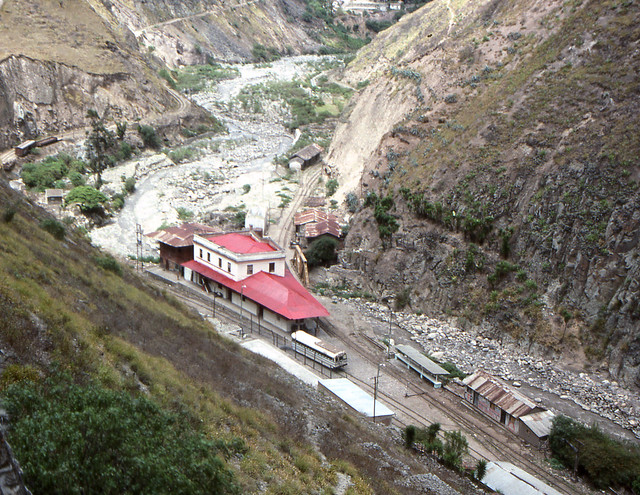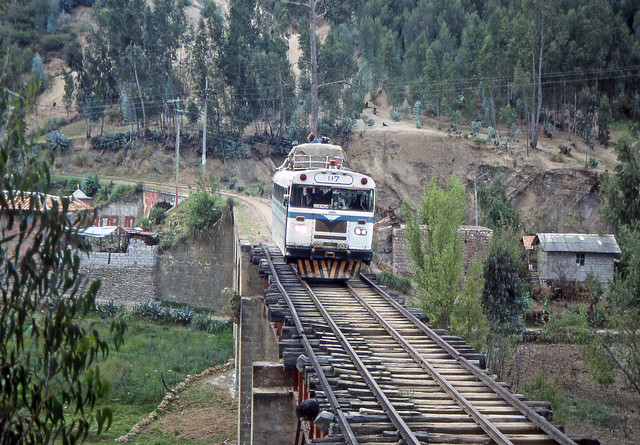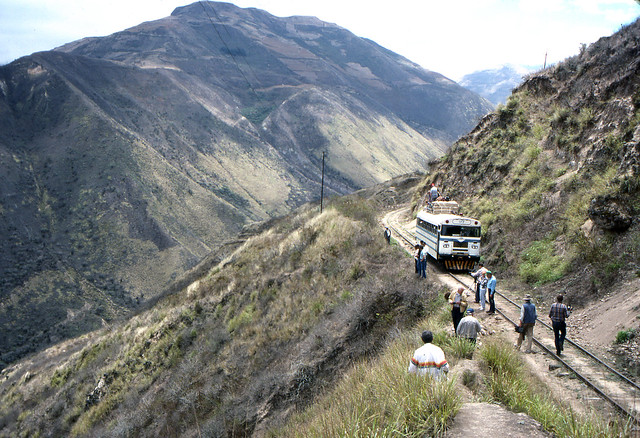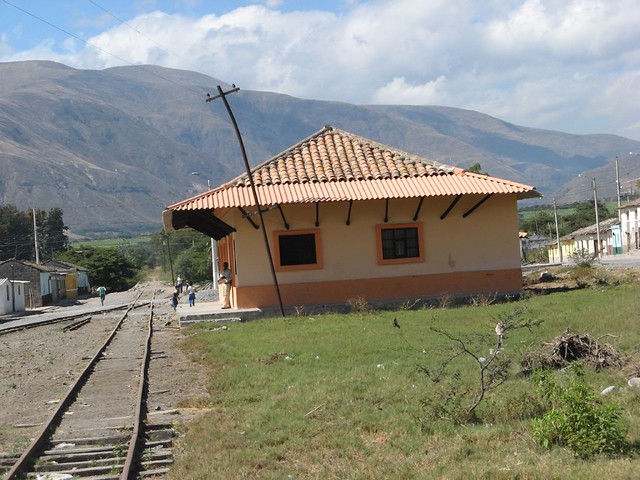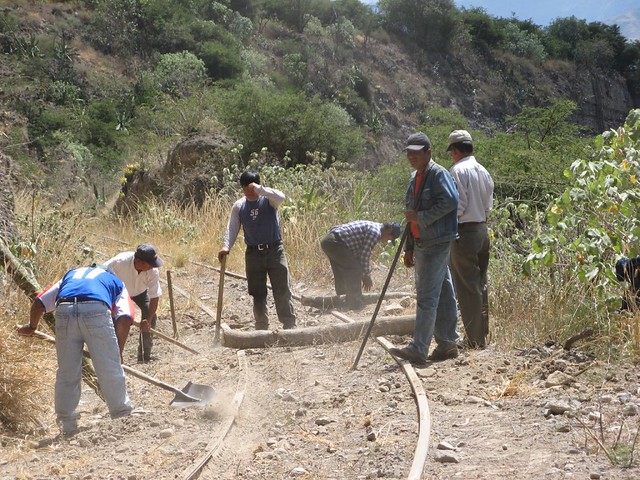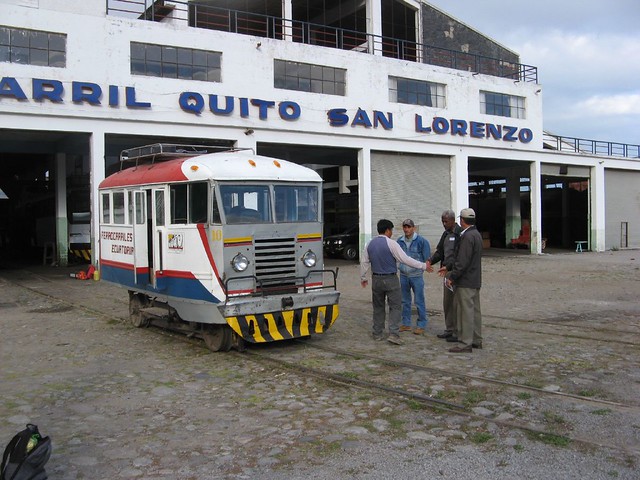Here we are, a couple of quite short postings on the “Rimutaka Railway”. By which, I mean sort of what is covered by the book of the same name, the old line from Upper Hutt to Featherston.
I don’t have the time I had hoped to write these articles so for now we are just going to have a quick look at some map sections to fill out the details. With the reorganisation of maps the first of these is the Wellington City Transport Map, the relevant part of which appears below.
View Larger Map
Now here are some subsections with comments about features displayed. As everyone knows both old and new routes are often quite close together, with three junctions and three crossings.
| View Larger Map | View Larger Map |
| Starting from Upper Hutt the first road crossed was apparently a level crossing instead of the current bridge. The old line crossed over the top of the new within a few hundred metres. | The old route then wound its way around through a series of cuttings and embankments. Subdivision development is now moving into the area threatening the remains today. |
| View Larger Map | View Larger Map |
| Cruickshanks Tunnel was the first on the line and along with the adjacent Mangaroa River bridge took the line into the Mangaroa Valley. | The remains of Mangaroa station, the first out of Upper Hutt, can still be seen in Flux Road. There was an army siding nearby for some years. |
| View Larger Map | View Larger Map |
| At Maymorn on the deviation, the two lines are now about 0.5 km apart. The green line shows the approximate route of a temporary link line used during deviation construction. | The second green line at Maymorn shows the corridor that the Rimutaka Incline Railway Heritage Trust proposes to use to link up the old and new routes. It's not clear if they will follow the direct line as this has an average grade of about 1 in 20. |
| View Larger Map | View Larger Map |
| At Maymorn the Rimutaka Incline Railway Heritage Trust is establishing its base. The Trust proposes to reopen a heritage railway over the former Rimutaka Railway and Incline. | The map ends at the western portal of the Rimutaka Tunnel. The old route crossed over the top of the tunnel at this location. |
Just a note on that first level crossing at Upper Hutt. The new route was lower than the old so putting in the bridge alongside the crossing would be almost impossible. Hence I postulate that this old line was probably taken out rather than having them next to each other, remembering this initial section of the deviation wasn’t fully completed until the old line had been closed.
Now as we know, the Rimutaka Incline Railway Heritage Trust has been established and is building up its resources at Maymorn with a view to reopening the Incline and the connecting trackage at either side. There is a certain amount of politics that accompanies the formation of yet another rail heritage organisation in a region the size of Wellington. I’ve got no particular issue with the establishment of the RIRHT as such. Rail heritage like all community and social organisations evolves continually and new organisations are established and take over from the old. One area where the RIRHT is quite forward looking compared to most of the rail heritage establishment in NZ is their use of the internet, including full publication online of all their newsletters. In a lot of current societies you will find this backward approach of selling these newsletters to subscribers – which I think is mistaken as the opportunity exists to publicise the activities of the societies to outsiders who are not getting this information any other way.
The acid test for the RIRHT will come in the next few years as it becomes necessary for them to make definite moves towards establishing the physical track they expect to operate on. This is what will establish them definitively as a serious player in the operation they are seeking to establish, rather than just another slightly different flavour of rail museum. I think with the stage of development they are now at, they should be seriously going for the resource consents and public hearings now, rather than spending a lot of time on their base site or their rolling stock. The whole premise they are founded on is dependent on establishing the rights to operate on that route and it is not a simple process to obtain the rights so getting the legal issues, which will take years to sort out anyway, is a good next step that still gives time to do some of the rolling stock and other core work as well.
On two of the above maps you can see the green lines that show connections between the old and new lines at Maymorn. The first of these is the route that was actually built and which still appears on maps and can also be seen on Google Earth. When the tunnel works were started the connecting track from Upper Hutt had not been laid so this connection was constructed in order to get materials in by rail to the site. It is very steep in parts with some gradients as much as 1 in 30. GE’s elevation profile shows an average grade of about 1.2% or 1 in 80. The RIRHT need to make a similar connection due to the fact that they have chosen not to reopen the old route from Upper Hutt to Mangaroa. Their route is shown as a corridor on some official documents of the Upper Hutt City Council. It would apparently make use of the unused space for a second track on the Maymorn Road overbridge then turn sharply and cross over Parkes Line Road with a bridge over it, then head more or less south until turning again to link up with the old route. It would need to climb quite sharply to get up to the bridge over Parkes Line Road and the ridge immediately south of it and this would make quite a challenge for operation. If Google Earth is right the average gradient is something like 5% or 1 in 20, which is certainly possible but very steep, so some means may have to be found to increase the track length over the straight line.
In recent years one of the positive developments of the area is a public access track from Parkes Line Road up to the Tunnel Gully section of the former railway, making it possible to take a mountain bike up on the train to Maymorn and cycle this part of the route, which has been established as such. This is shown on subsequent maps as being part of the Rail Trail over the route and will be covered as such in Part 2 of this series.



